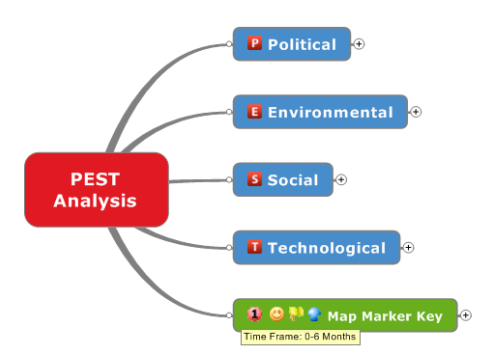Executive summary
Nokia Company is a mobile and telecommunication company based in Finland. This is a company whose main focus is in the manufacture of mobile phone equipment and accessories for sale. This equipment includes; mobile phones, telecommunication equipment and other mobile content services.
There is no doubt, that at the mention of the word Nokia in any part of the world, people will applaud because Nokia products have penetrated almost all regions of the world. Nokia’s success has been driven by its key theme which is ‘accelerate and innovate’.
This has been the driving force behind the success of the Nokia Company for years. Through this theme, Nokia has for a long time partnered with many other mobile services providing company to carry out innovations with the aim of improving technology.
Nokia Company is one of the largest companies in the world providing employment to very many people. The company has very big market and operations in Europe and Asia. Other continents have also provided a sizeable market for the Nokia products, for instance Africa and America. Currently, Nokia Company has provided employment opportunities to about 123,600 people all around the world (Wearden, 2009).
Nokia Company has been one of the companies with very high gross revenue recorded yearly. For instance, the financial year that ended December 2009, the company recorded overall revenue of about $57, 157.5 million. In fact, it is recorded that this was not its best because it represented a 19.2% decrease in its revenue as compared to the previous financial year.
In the same year of 2009, Nokia recorded a $1, 669.4 million operating profit which was also a drop as compared to the previous year. Lastly, a net profit worth approximately $1, 242.6 million was recorded in the year 2009 which showed some trend that the company was having a drop (figure 4 in the appendix).
From this, it is evident that Nokia Company has been a company that has been experiencing very good business for a very long time.
Despite this good performance history of Nokia, the company has also been facing challenges that have been affecting in profitability. One of the major challenges that Nokia is facing of late is that its market share has greatly slipped and other competitors are coming in strongly against the Nokia products.
For instance, Samsung, Motorola and Sony Erickson have taken up most of the market that was initially being enjoyed by Nokia products. Since the invention of the mobile phone in the year 1973, there has been a great increase of the number of users in the world, for instance, it is estimated that there was a total of 1.52 billion mobile phone users in the world by the year 2004.
With the increased competition, Nokia has a total market share of around 35 percent followed by Motorola that has a market share of 14.7%, and then at third place in the market share ranking is Samsung with a market share of 10.5% (Agar, 2003).
Industry Summary
Nokia Company enjoys a monopoly in the mobile phone equipment and accessories. This has been due to its high level of innovation and always putting in mind the cost and the current features that are being demanded for in the market. The environment that Nokia Company is working in currently is composed of very sophisticated consumers who are keen with any small improvements in the existing technology.
The market is basically concerned with being provided with mobile phones and accessories that will make their lives more comfortable. The environment that Nokia is in currently is an environment of competition from other mobile phone product providers.
Other mobile phone manufacturing companies like Motorola, Samsung and Sony Erickson have come in strongly trying to meet the market demand (Cruickshank, 2001). This has greatly affected the market share base of Nokia because it has been reducing over time since the early years of the twenty first century.
Porter’s 5 Forces
“The five forces in the competition model are; the threat of entry of new competitors, the threat of substitute products or services, the intensity of competitive rivalry, the bargaining power of customers (buyers) and the bargaining power of suppliers” (Agar, 2003, p.46).
From the diagram, it is very evident that competition and rivalry from other firms producing the same products depends on the four aspects; potential entrants, buyers, suppliers and substitutes (see figure 1 in the appendix).
The entry of new companies and firms that produce and sell the same commodities in the market is a very big threat. Any firm should always be worried of this and always come up with strategies so that an occurrence of this situation does not greatly affect its market.
This has greatly affected the net profit being made by the company. This is a major issue that Nokia has to handle fully and maintain its monopoly in the mobile phone sector.
The aspect of substitute products has of late been a great concern for the Nokia Company. Of late, there has been an influx of cheap phones with very low quality into the market worldwide. These phones are readily affordable to the poor people at cheap costs.
This has lead to the drop in the overall revenue of Nokia Company as people prefer to buy cheap products even though they know that the products will not last for long. Computers have also been substitute products for the mobile phones as people prefer acquiring the computer, then with the internet; it provides a cheap means of communication all around the whole world.
The suppliers of the row materials and other necessities in the manufacture of the mobile phones and other accessories play a key role in the overall competitiveness of the firm’s products. If the firm is acquiring its raw materials expensively, this will be transformed into high prices which will make the products less available to most of the customers.
The suppliers can also be firms and companies that have the mandate of availing the products to the customers. The suppliers also determine the competitiveness of the products. This is mainly due to factors like the physical positioning of the suppliers and their overall relation with the customer population.
The consumers or customers also greatly determine the overall competitiveness of the products of a specific firm. The consumers are very sensitive to factors like the economy, the standards of living and inflation. In case of the occurrence of such situations, the customers may seem to drift away from good quality and expensive products and move on to purchasing low quality and inexpensive products.
Internal analysis of Nokia Company
As it had been earlier mentioned, Nokia is a company dealing in voice-centric mobile phones, imaging phones, gaming devices that are mainly used for entertainment and in the enhanced communicators. The Nokia Company is made up of four business groups which are named as; mobile phones, multimedia, networks and enterprise solutions (figure 2 shown in the appendix).
Nokia is still enjoying a wide market of its products in more than one hundred and thirty countries all over the world. The network sector is mainly concerned with providing infrastructure for the service delivery platforms to other mobile phone operator companies. The section of the enterprise solution offers the opportunity of mobile and device connectivity within the world.
These four sections have proved to be very instrumental in the success of Nokia Company as they have ensured that Nokia remains competitive even during this period when many firms have come in the market producing similar goods and services.
Mission
The mission statement for Nokia Company is “connecting people”. The mission statement of any organization basically refers to the slogan that carries the major aim and objective of a specific firm. This is a clear indicator that Nokia has had the aim of seeing people all around the world get connected through the mobile phones and the mobile technology.
Through this, communication around the world will be easy and cheaper as compared to the initially very expensive and time wasting communication channels that existed.
Hence the main task for Nokia Company is to provide customers with commodities that ensure that connectivity is improved throughout the whole world. This requires a lot of investments in technology and innovation to cope with the very many challenges encountered during the process of objective achievement.
Strategies being put in place
Due to the increased competition that has been bringing down the overall revenue of Nokia, the company has put up some strategies to ensure that it continues to dominate the mobile phone products and accessories sector.
The company aims at providing high-valued products to the consumers. This is through coming up with more varied products with high performance qualities whose prices vary. The set price should be affordable to the rich, middle class and the poor people. This has then called for a lot of investment in innovation so that the products being brought in the market attract the customers and consumers.
In addition, Nokia Company has invested a lot in advertisement of its products world wide. This is being done by very prominent advertisers like the Rodgers. This has so far proved beneficial to the overall sales of the company as the sells have started rising again. This can be seen clearly in figure 4 displayed in the appendix.
Nokia has also entered into joint ventures and partnerships with other companies to try and market their products. This has greatly proved beneficial and still remains a key strategy for the growth of the market share of the Nokia Company as these partner companies are assisting in the sell of the Nokia products.
The company has also invested in nurturing a culture of innovation and risk taking by their employees. This is because the company knows that its major success will be due to quality innovations.
The employees are being given an ample environment so that they engage in personal innovative issues that are aimed at improving the productivity of the firm. This has also been embraced through the collaboration with other institutions like the research centres who are also being engaged in innovative activities.
Strengths
The continued high profit levels and large market share of Nokia has been due to its strengths as compared to its major competitors. As already mentioned, Nokia enjoys a large market in around 130 countries worldwide. This gives it the largest distribution network as compared to other companies dealing with the same products (Porter, 2004).
This has continued the long time monopoly of the Nokia Company in the mobile phone industry. The employees of the company especially those ones who are engaged in innovation have continually provided the technology that is required by the customers. This has helped in the overall performance of the company.
It is worth noting that the products being produced by Nokia are user friendly and are easily used by new customers. This has contributed to the high demand of the Nokia products. In addition, Nokia has provided a wide variety of products that fit all the classes of the market.
This has led to customer satisfaction for the available commodities (Virki, 2007). Lastly, the re-sell prices of the Nokia products are higher as compared to the products from other competitors.
Weaknesses
Any firm has both strengths and weaknesses. Despite the fact that Nokia has many factors that are a display of its strength, it also has a few weaknesses. For instance, the prices offered by the company to some commodities if not affordable by the low income earning category. This is because the products are very expensive thus making the people go for cheaper goods from other companies.
Not all the products that are produced by Nokia Company are user friendly. Some of the commodities are complex and need some time to learn how to use them. In addition, there is low marketing and advertisement of some products of Nokia hence making them unfamiliar to the market group.
Lastly, some regions in the world have very few service centres. For instance, India has very few centres which have made the customers lack some crucial after-sale services (Yoginvora, 2009).
External Analysis of Nokia
The external analysis mainly involves external factors that directly or indirectly affect the activities and operations of Nokia. Most of these factors may be factors that cannot be directly controlled by the firm itself. The factors include; Political, Economic, Social, and Technological factors, the porters factors which had earlier on been analyzed. These factors are conclusively analyzed below.
PEST Analysis
PEST analysis stands for Political, Economic, Social, and Technological analysis and describes a framework of external environment factors (see Figure 5 in the appendix). It is with no doubt that these factors affect the overall running of the business of any firm (Prahalad & Hamel, 1990).
The political situation in any region of the market directly affects the overall sales of the Nokia products. In addition, other political activities like the amount of taxes imposed on the Nokia products also affect the overall availability of the product. Regions where high taxes are imposed on the imported products tend to have lower sales as these commodities will be expensive to the consumers.
The financial and economic standards of the customers also affect the overall amount of sales in a specific region. Economical factors like inflation and low per capita income affect the sales negatively. The social lives of the people in various regions of the world also affect the purchasing of the Nokia products.
This is true because the overall behavior of the people will tend to affect their preferences. Lastly, the technological analysis of the commodities will determine the performance of a specific commodity in the market. Most customers tend to go for products with specific specifications and technological advantages.
Competitors
A competitor is any person, or firm selling the same type of products in the same market as yours. As already mentioned Nokia has had a continuous increase in the number of its competitors for the past few years.
The major competitors of Nokia are; Samsung, Motorola, Sony Erickson, Apple and some others (figure 3 in the appendix indicate the market base of all the companies). A brief analysis of the major competitors is necessary and is done below.
Motorola Company has been enjoying a large market share base of about 14.7 percent. This is a large base that has placed it as the second company with the highest number of sales after Nokia.
With its improvement in the technology of their products, Motorola is expected to continue giving Nokia stiff competition in the market. Lastly, some of the Motorola products are cheap hence meeting the needs of the low economic class people (Motorola solution, 2011).
Samsung and Sony Erickson also have a large market base that has reduced the overall sales of Nokia by a big margin. From the table, it is evident that these two companies have a big role in the overall market.
In addition, the counterfeit products that have currently flooded the market are providing a lot of competition for the Nokia products worldwide. This then calls for good and proper analysis of the market by Nokia Company so that it does not continue losing the market base to its competitors.
Opportunities
The Nokia company has a very good opportunity that allows it expand its market base as compared to the other competitors. Nokia has a varied range of products with very good and sophisticated features at varied prices. This allows their products to be very competitive and suit all the economic classes in any market.
This is not the case with some of its competitors as they have very expensive phones and accessories; for instance the Sony Erickson products. In addition, telecom penetration is being felt in many countries in the world especially African countries and other Asian countries like India. This gives Nokia a chance to establish a good market share base in these regions hence increase the amount of their sales (Yoginvora, 2009).
Threats
Without doubt, any firm in business cannot lack threats to its success. Nokia is currently facing a lot of competition from other mobile phone companies that have come into the market with high quality and affordable products. These companies include Motorola, Sony Erickson, Samsung and Cingular.
The competitor companies are taking up the market base that was initially enjoyed by the Nokia Company (Business Week, 2011). The major threat is that these companies are producing products with more sophisticated features, with new styles and types, at a cheap cost and the companies are also providing very excellent after sale services.
This is a challenge because Nokia has to make sure that it improves its commodities and services all the time to ensure that they maintain high competition from the competitor products. Lastly, there is an increasing demand for the WLL network yet Nokia does not produce many mobile phones that support this network. This will lead to a drop in the total sales of the Nokia products (Yoginvora, 2009).
Key Issues
Nokia has had some problem in its technology. The symbian operating system being used by Nokia has failed to give stiff competition to some competitors like Apple especially after Apple launched the iphone in the year of 2007. In addition, the touch screen technology by Apple has given it high competing power against Nokia.
Lastly, the high demand for the WLL network in the world is greatly affecting the market base of Nokia as it produces few mobile phones that support this technology. This has led to the drop in the market base of Nokia products as the customers who appreciate technology find no sense in going in for the Nokia products.
One of the major challenges for Nokia has been the market share in the United States of America. Nokia lost its high market share and currently holds only around ten percent of the market there. This has been an issue because even with the efforts being input, there are no positive outcomes due to the stiff competition from other companies like Apple, Samsung and LG.
Counterfeit products that have flooded the market all over the world has paused a challenge. These counterfeit products are of low quality and are sold at cheaper prices as compared to the genuine Nokia mobile phones. Due to this issue, the overall sales of Nokia have greatly dropped as most of the people go for these cheap products because of economical factors like low incomes.
Efforts being put in place by Nokia to try and reduce the effects of these low quality goods have proved not very beneficial hence greatly affecting the overall business of the Nokia business.
Strategic Recommendations
Strategic recommendations can be found as a move to try and reverse the big drop in terms of sales that Nokia Company has been going through for quite some time now. It is expected that if the recommendation are put in mind, the current situation can be stopped and improvements made to ensure that the overall sales of the Nokia products can start rising again.
Some of the major recommendations that can be put in place include; internal development of the company itself, take over, acquisition or mergers and strategic alliances. These recommendations will be analysed in a way to show how crucial they are in the case of Nokia and the need for their adoption. There is a need for the adoption of these recommendations to rescue the fast dropping sales market base of the company.
There is a need for Nokia to target some markets and invest capital in those sectors. These investments can be directly invested into innovation to keep up with the great competition in technology that the company is facing from its competitors like Apple and Samsung.
These investments can also be directly invested into opening up more distribution and after sale service centres all over the world. These centres should be mostly opened in regions where the company has been experiencing a very stiff competition especially in the United States of America, India and china.
If necessary, there is need for the company to have a take over or acquisition of some of the weak mobile phone manufacturing firms and some other distribution networks for the same products. This will help Nokia expand its product range and to expand its market for the products it is currently manufacturing. If this is done, there is a great likelihood of the overall market base of Nokia growing world wide.
Nokia also need to get into strategic alliances with other companies. These companies include the advertisement and the distribution companies. Through these alliances, Nokia will have its products well marketed and readily available to customers worldwide. These alliances will also develop the customers’ confidence of Nokia products in regions where people have more trust in the other competitor products.
Lastly, there is also a need for the Nokia Company to customize the products that they manufacture so that they encourage support from the mobile service providers. This can be through allowing the name of some specific partner mobile service companies to be displayed during the start and operation of the handset, as opposed to the brand names which are usually displayed.
Alternative Strategic options
Giving a strategic recommendation is the process of recommending the alternative strategic options generated by the SWOT analysis. Management need to seek, identify and evaluate alternative courses of action to ensure that the business reaches the objectives they have set.
This will be largely a creative process of generating alternatives, building on the strengths of the business and allowing it to tackle new products or markets to improve its competitive position.
The process of giving strategic recommendation involves some key activities which include:
- What basis should the organization compete and on what basis can it achieve competitive advantage?
- What are the alternative directions available and which products or markets should the organization enter or leave?
- What alternative methods are available to achieve the chosen direction?
From the above, various strategic alternative options can be found as a move to try and reverse the big drop in terms of sales that Nokia Company has been going through for quite some time now. It is expected that if the alternative options are put in mind, the current situation can be stopped and even improvements made to ensure that the overall sales of the Nokia products can start rising again.
There is a big need for Nokia to tie up mobile phone operators into long term contracts and use co-branding that will allow the providers use Nokia handsets for the provision of the mobile phone services. These operators can also be encouraged to adopt the use of the Nokia products so that they get more customers to purchase their products.
Through entering into these contracts with some of the biggest mobile phone service providers around the world, it will serve as a long term solution to the problems that Nokia is encountering where it is facing very stiff competition from other companies.
As one of the strategic option for the Nokia Company, there is a need for the company to diversify in the products and the services it provides to the consumers.
Currently, Nokia has dominated the mobile phone handset and accessories market. In addition, there is a need for the company to invest into other services like networking and internet services to ensure that it remains very profitable despite the stiff competition it is getting.
There is no doubt that the markets in Europe and United States of America are being exhausted (Ojo, 2009). There is therefore a need for the Nokia Company to invest in the replacement facilities and services that will help maintain market in these regions. Through these, the company will be the pioneers in this sector hence enjoy the monopoly before other companies’ start similar programs.
The matter of making alliances with other companies is also a vital aspect. This will help the company gain market in some of the regions where there is still raw market for the mobile phone handsets and other accessories. Through these alliances, the company will regain its large market share base that has been reducing from the past few years.
In conclusion, Nokia Company is still the largest mobile phone manufacturing company with the largest market share base all over the world. Its past records have been excellent as it has continued to make good profits. The continued drop in its market base, yearly sales and net profits has been a great challenge.
This then calls for a need to try and reverse this trend as the company is being faced with stiff competition from its competitors. However, there is still a bright future for Nokia due to the monopoly that it enjoys in the market.
References
Agar, J. (2003). Constant Touch: A Brief History of the Mobile Phone. Cambridge: Icon Books Ltd.
Business week. (2011). Apple Doubles Mobile-Phone Market Share, Nokia Slumps, IDC Says. Web.
Cruickshank, D. (2002). Mobile phone history. Web.
Motorola solution. (2011). Motorola solution venture capital. Web.
Ojo, B. (2009). Analysis: Nokia vulnerable to maturing mobile market. Electronic Engineering Times, 23 March, p.8.
Porter, M. E. (2004). Competitive advantage: Creating and sustaining superior performance. New York: Free press.
Prahalad, C. K., & Hamel, G, (1990). The Core Competence of the Corporation. Harvard Business Review, 68(3), 79-91.
Virki, T. (2007). Reuters: Nokia leads race for next billion mobile users. Web.
Wearden, G. (2009). The Guardian: Nokia to shed another 1,700 jobs. Web.
Yoginvora. (2009). SWOT Analysis of Nokia. Web.
Appendix
Figure 1: Porter’s 5 Forces
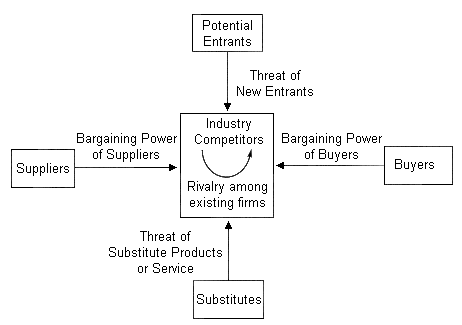
Figure 2: the Nokia business group
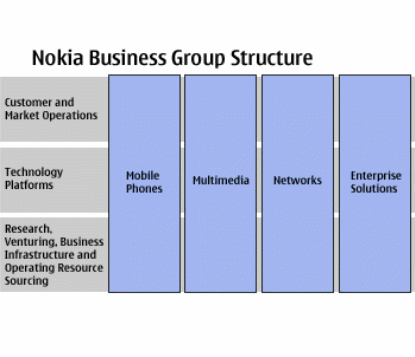
Figure 3: Mobile phone market with several competitor companies
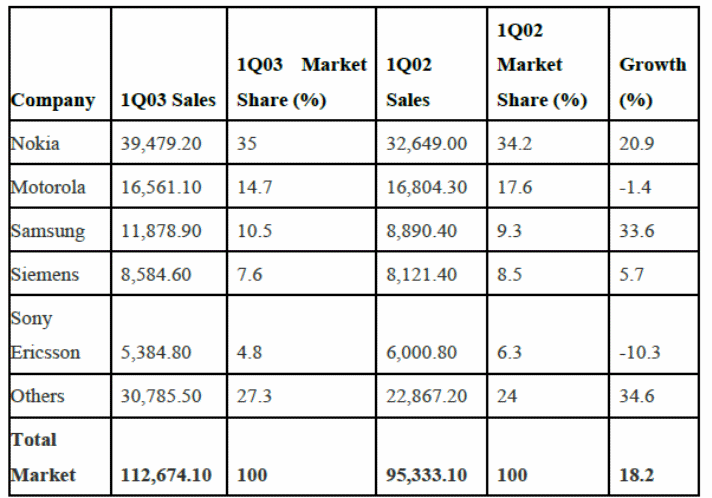
Figure 4: graphs showing the net sales and operating profits for Nokia
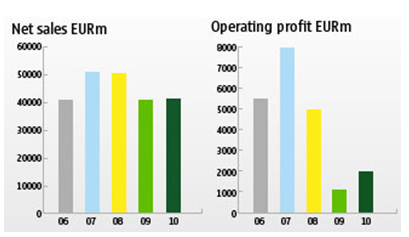
Figure 5: PEST analysis diagram
